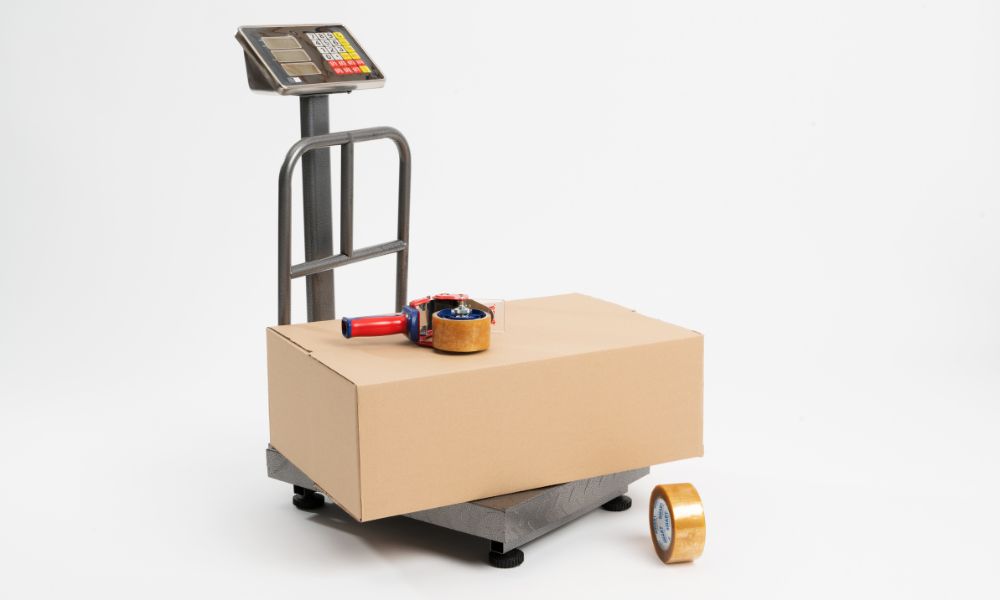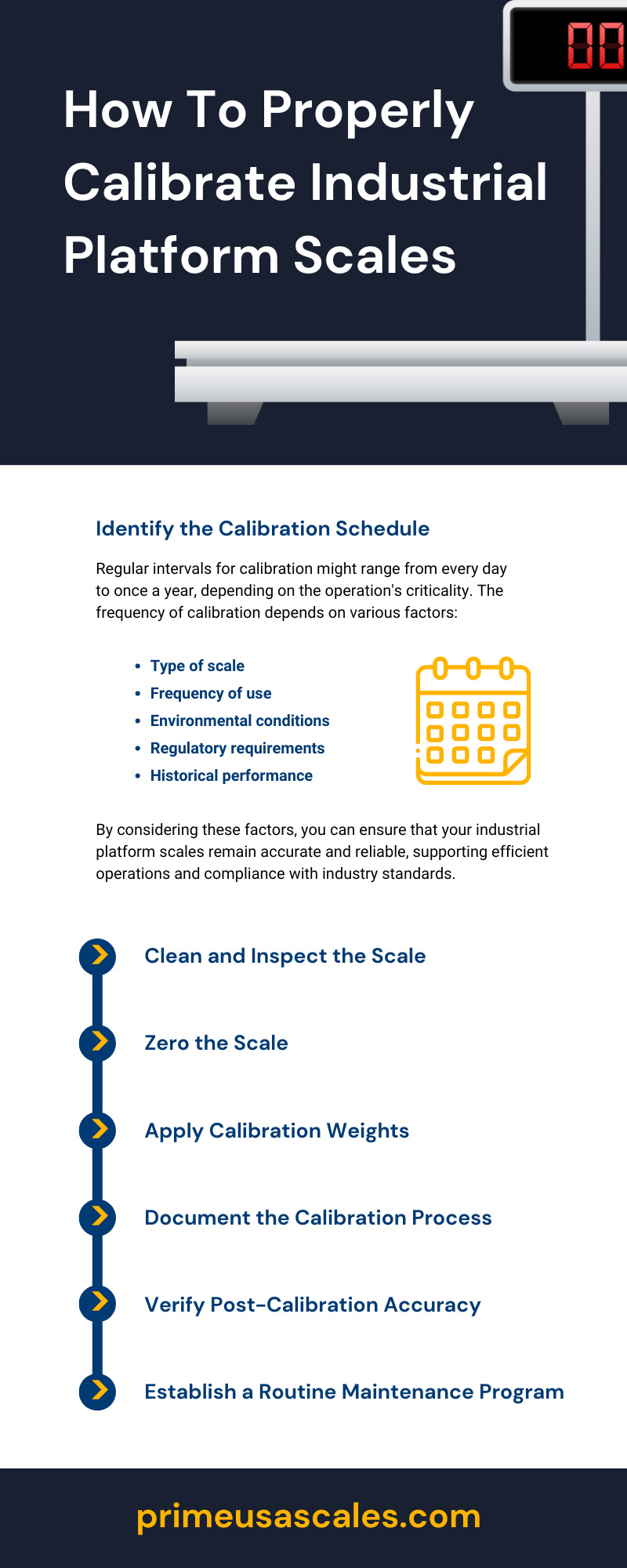Industrial platform scales play a crucial role in various sectors, from manufacturing and logistics to agriculture and pharmaceuticals. Ensuring these scales provide accurate measurements is vital for operational efficiency, regulatory compliance, and maintaining the quality of products and services.
Calibration not only influences the accuracy of measurements but also impacts the overall efficiency and cost-effectiveness of operations. Incorrectly calibrated scales can lead to significant errors, resulting in over- or undercounting of materials, which can, in turn, cause substantial financial losses.
Learning how to properly calibrate industrial platform scales will help prevent issues and ensure adherence to industry standards and norms. This guide will tell you about the importance of calibration, highlight the tools and equipment required, and provide a detailed, step-by-step guide to calibrating your equipment.
Understanding the Importance of Calibration
Calibration is the process of adjusting and verifying the accuracy of a scale by comparing its readings to a known standard. This process ensures that the measurements the platform scale provides are accurate and consistent.
Regular calibration helps prevent errors, reduces the risk of product waste, and ensures compliance with industry standards and regulations. One of the primary reasons calibration is so crucial is its impact on product quality. In industries where product uniformity is critical, such as pharmaceuticals or food production, proper calibration ensures that every unit meets the required specifications.
Identify the Calibration Schedule
Regular intervals for calibration might range from every day to once a year, depending on the operation’s criticality. The frequency of calibration depends on various factors:
- Type of scale: Different scales have varying sensitivities and tolerances. High-precision scales used in pharmaceuticals may require more frequent calibration compared to those used in less critical applications, such as bulk material handling.
- Frequency of use: Scales that see more frequent use suffer from higher wear and tear, which can affect their accuracy over time. Establishing a calibration routine that accounts for the intensity of use will help maintain reliable measurements.
- Environmental conditions: Factors such as temperature, humidity, and dust can impact a scale’s performance. Scales operating in harsh or variable environments may require more frequent calibration to ensure accuracy.
- Regulatory requirements: Certain industries have strict regulations that dictate the calibration frequency for measuring instruments. Familiarize yourself with the specific requirements applicable to your industry to ensure compliance.
- Historical performance: Reviewing past calibration records can provide insight into how often your scales tend to drift out of calibration. This data can inform a more tailored and effective calibration schedule.
By considering these factors, you can ensure that your industrial platform scales remain accurate and reliable, supporting efficient operations and compliance with industry standards.
Clean and Inspect the Scale
A clean and well-maintained scale is fundamental for accurate calibration. Start by cleaning the platform and removing any debris, dirt, or foreign objects that could affect the scale’s readings. Use a soft brush or a lint-free cloth to gently wipe away dust and particles. For stubborn grime, apply mild detergent with a damp cloth, but ensure that it’s completely dry afterward to prevent moisture damage.
Inspect the scale for any physical damage, corrosion, or excessive wear and tear. Look for cracks or deformities in the platform, which could affect the scale’s accuracy. Also, check the load cell for any signs of rust or deterioration, as this could hinder its ability to measure weight precisely.
Zero the Scale
Zeroing the scale is an essential step in the calibration process, ensuring that the scale starts from a precise baseline of zero when no load is present. To zero the scale, begin by turning it on and allowing it to warm up properly. This helps stabilize the internal components for accurate measurements.
Make sure the platform is empty, removing any objects or debris. Then, press the zero button or follow the manufacturer’s specific instructions for your model. If the scale doesn’t zero out correctly, check for any environmental factors, such as drafts, vibrations, or an uneven surface.
Apply Calibration Weights
To properly calibrate your industrial platform scale, carefully place the certified calibration weights on the platform. It’s important to use weights that are appropriate for the scale’s capacity and accuracy requirements. Start with the lightest weight and gradually increase to the heaviest, placing each weight gently and ensuring you position it in the middle of the platform to avoid off-center loading.
Compare these readings to the known values of the calibration weights. This comparison will highlight any discrepancies that you need to address. If the readings are within the acceptable tolerance levels, the scale has proper calibration.
Document the Calibration Process
Documenting the calibration process goes beyond simply noting the date and results; it’s about creating a comprehensive record that supports transparency and accountability. Begin by detailing the identity of the person performing the calibration, as this adds a personal layer of responsibility and expertise to the record.
Explicitly mention the environmental conditions during calibration, such as temperature, humidity, and any other relevant factors, to provide context that could explain potential variations in readings. Describe the condition of the calibration weights before use, including any visual inspections for wear or accuracy, to ensure that they meet the necessary standards.
Verify Post-Calibration Accuracy
Verifying post-calibration accuracy is a multistep process that ensures the calibration adjustments truly reflect the scale’s performance under normal operating conditions. Start by reapplying the full range of certified calibration weights, just as you did during the initial calibration.
Ensure that the scale provides accurate readings not just for a single weight but across the entire spectrum of calibration weights. This involves repeating the application process several times to confirm that the readings are stable over multiple trials.
Establish a Routine Maintenance Program
In addition to regular calibration, establishing a routine maintenance program for your industrial platform scales is essential. This program involves a series of systematic activities designed to keep the scales in optimal working condition.
Regular cleaning is crucial to prevent the buildup of debris and contaminants that can affect the scale’s accuracy. Regular inspections involve close examination of all mechanical and electronic parts to detect signs of wear, corrosion, or damage. Testing the scales periodically helps verify that the scale remains within the designated tolerance levels and functions correctly under operational conditions.
By understanding the importance of calibration, identifying the appropriate schedule, and following a systematic process, businesses can ensure their equipment’s accuracy and reliability. Enhancing the efficiency of reliable platform weighing scales with proper calibration will ensure operational efficiency and compliance with industry standards for overall business success.
Call us today to learn more about how to test your scales and keep them in prime condition. This will elevate your business’s operations so that it can thrive in a competitive market. Explore our catalog of scales and choose the best to enhance your productivity.

